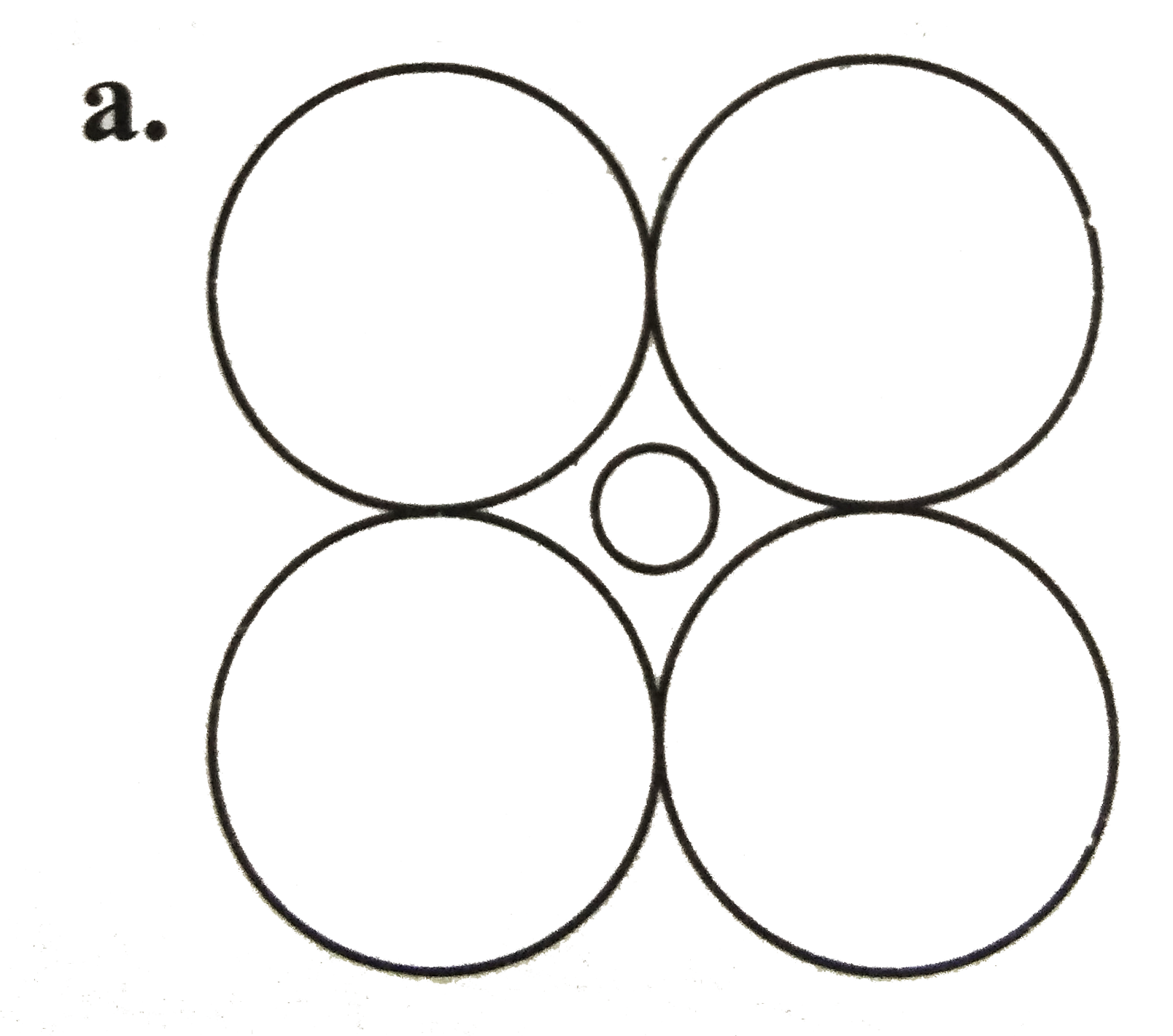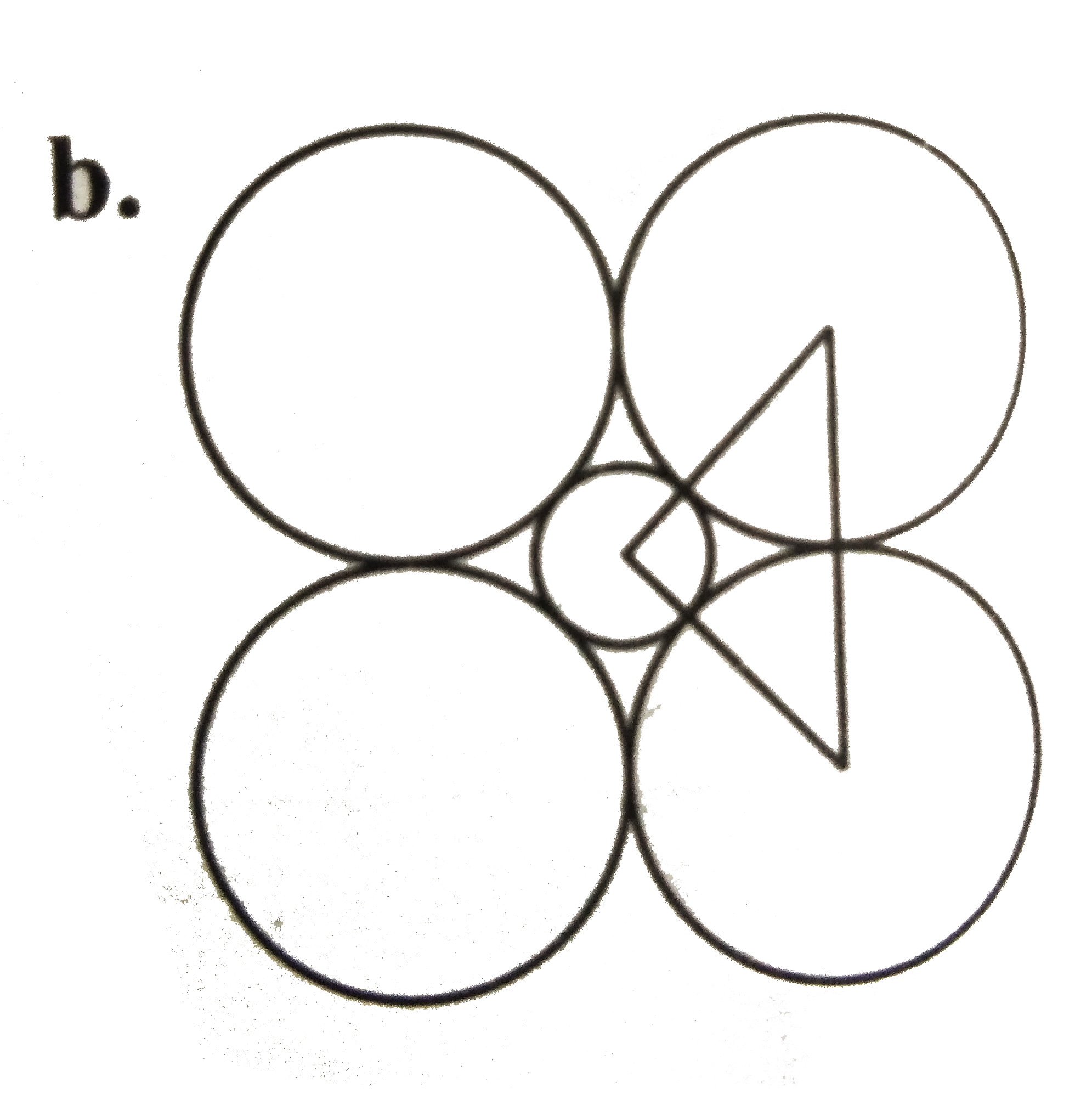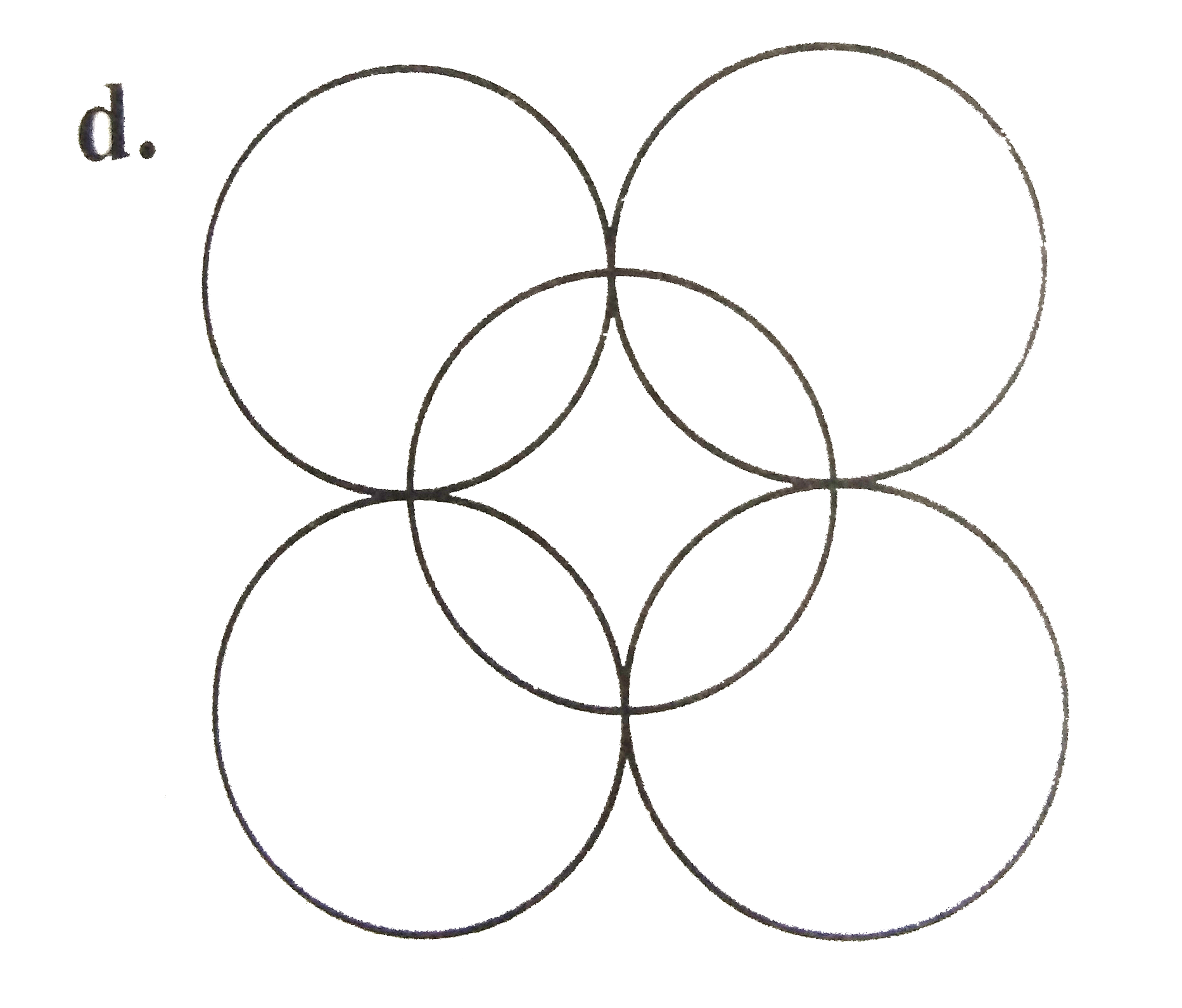AX,AY,BX, and BY have rock salt type structure with following internuclear distances:
∣∣
∣
∣
∣
∣
∣
∣∣SaltAnion-anionCation-aniondistance inÅdistance inÅAX2.401.70AY1.631.15BX2.661.88By2.091.48∣∣
∣
∣
∣
∣
∣
∣∣
The structure given below is of

(a)AX
(b)AY,BX
(c)AY,BX,BY
(d)AY,BX,BYandKCI
AX
AY,BX
AY,BX,BY
AY,BX,BYandKCI
The correct Answer is:D
Yɵ is small than Xɵ.
The difference in internucler distanc between AX and BX indicates that the cation must not be touching apl the anions in AX (smaller cation, larger anion) [see Q.10, Fig.(a)]. There must ve anion-anion contact is this compound.
∴ Anion-anion ditance = 2rɵ
The remaining radius ratio is represented in (see Q.9 Figure].
b. Radius of Xɵ(rɵ)=2.402=1.20Å
Radius of B⊕(r⊕)=(1.88−1.20)Å=0.68Å
c. Similarly, radius of Yɵ(rɵ)=(1.48−0.68)=0.80Å
Radius of A⊕(r⊕)=(1.15−0.80)Å=0.35Å
As explained above.
Topper's Solved these Questions
- SOLID STATEBOOK - CENGAGE CHEMISTRY ENGLISHCHAPTER - SOLID STATEEXERCISE - Exercises (Multiple Correct)
39 Videos
- SOLID STATEBOOK - CENGAGE CHEMISTRY ENGLISHCHAPTER - SOLID STATEEXERCISE - Exercises (Single Correct)
72 Videos
- SOLID STATEBOOK - CENGAGE CHEMISTRY ENGLISHCHAPTER - SOLID STATEEXERCISE - Solved Examples
13 Videos
- REDUCTION AND OXIDATION REACTION OF ORGANIC COMPOUNDSBOOK - CENGAGE CHEMISTRY ENGLISHCHAPTER - REDUCTION AND OXIDATION REACTION OF ORGANIC COMPOUNDSEXERCISE - SUBJECTIVE TYPE
4 Videos
- SOLUTIONSBOOK - CENGAGE CHEMISTRY ENGLISHCHAPTER - SOLUTIONSEXERCISE - Ex 2.3 (Objective)
9 Videos
Similar Questions
AX,AY,BX, and BY have rock salt type structure with following internuclear distances:
∣∣ ∣ ∣ ∣ ∣ ∣ ∣∣SaltAnion-anionCation-aniondistance inÅdistance inÅAX2.401.70AY1.631.15BX2.661.88By2.091.48∣∣ ∣ ∣ ∣ ∣ ∣ ∣∣
Which of the following structure is, respectively, by Ax?
(a)
(b)
(c)
(d)
View SolutionAX,AY,BX, and BY have rock salt type structure with following internuclear distances:
∣∣ ∣ ∣ ∣ ∣ ∣ ∣∣SaltAnion-anionCation-aniondistance inÅdistance inÅAX2.401.70AY1.631.15BX2.661.88By2.091.48∣∣ ∣ ∣ ∣ ∣ ∣ ∣∣
Ionic radii of X⊕ and YΘ, respectively, are
View SolutionAX,AY,BX, and BY have rock salt type structure with following internuclear distances:
∣∣ ∣ ∣ ∣ ∣ ∣ ∣∣SaltAnion-anionCation-aniondistance inÅdistance inÅAX2.401.70AY1.631.15BX2.661.88By2.091.48∣∣ ∣ ∣ ∣ ∣ ∣ ∣∣
A salt MY crystallizes in the CsCl structure. The anions at the corners touch each other and cation is in the centre. The radius ratio (r⊕/rΘ) for this structure is
View SolutionAX,AY,BX, and BY have rock salt type structure with following internuclear distances:
∣∣ ∣ ∣ ∣ ∣ ∣ ∣∣SaltAnion-anionCation-aniondistance inÅdistance inÅAX2.401.70AY1.631.15BX2.661.88By2.091.48∣∣ ∣ ∣ ∣ ∣ ∣ ∣∣
Ionic radii of A⊕ and B⊕, respectively, are
a.0.35 and 0.68Å
b.0.68 and 0.35Å
c.1.20 and 0.80Å
d.0.80 and 1.20Å
View SolutionDIfferentiate the following w.r.t x :1ax2+bx+c
View SolutionA, B C and D are the points of intersection with the coordinate axes of the lines ax+by=ab and bx+ay=ab, then
View SolutionIf Ax+By=1 is a normal to the curve ay=x2, then :
View SolutionIf ax2+bx+c=0andcx2+bx+a=0(a,b,c∈R) have a common non-real roots, then which of the following is not true ?
View SolutionFind the points on the curve ax2+2bxy+ay2=c,
0<a<b<c, whose distance from the origin is minimum.
View SolutionSTATEMENT - 1 : In rock salt structure, all the octahedral voids in the close packing of anions are occupied by cations.
and
STATEMENT - 2 : In rock salt structure, the distance of closest approach between two anions equal to half the face diagonal of the unit cell.
View Solution
